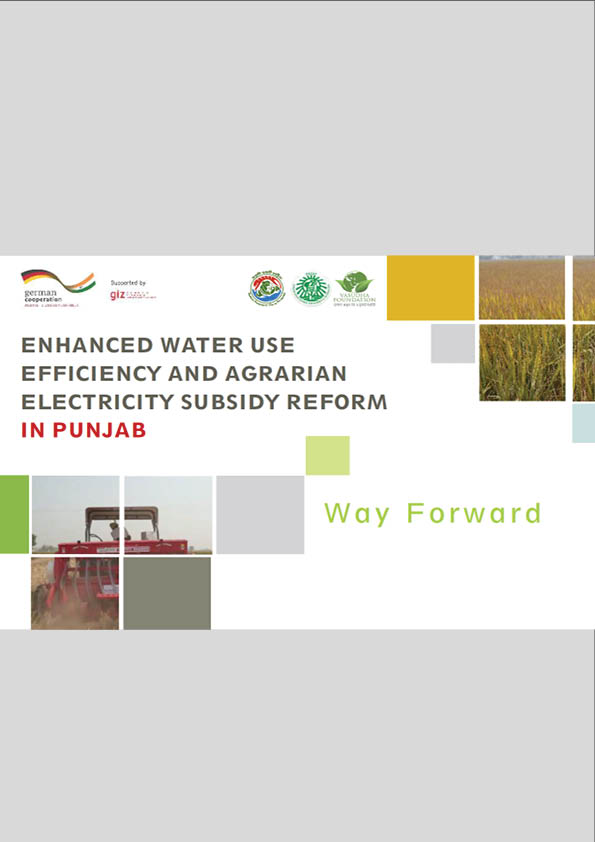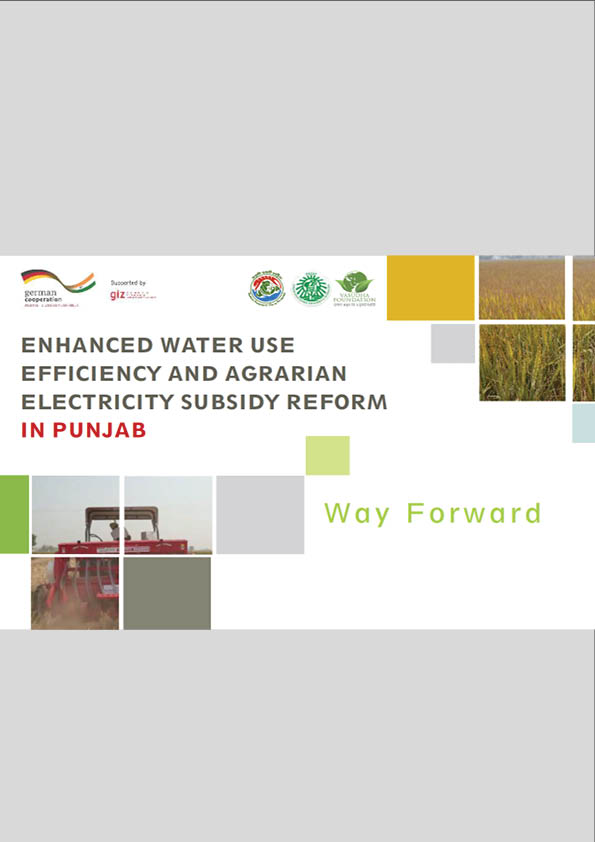
About the Report
The project ‘Climate Change Adaptation in Rural Areas-India (CCA-RAI)’ being implemented under the bilateral cooperation of Ministry of Environment, Forest and Climate Change (MoEFCC) and Deutsche Gesellschaft für Internationale Zusammenarbeit (GIZ) GmbH-India, aims to integrate climate adaptation measures into the national and state development planning.
It also aims to develop concrete pilot experiences on adaptation measures in partnership with identied States and supports up-scaling of successful technical and financial adaptation approaches. Punjab is one of the partner states and the nodal partner is the Punjab Council for Science and Technology. The study was carried out as part of the project in partnership with Vasudha foundation and PSCST.
Background and Context
Punjab is a largely agrarian state and as such, is highly vulnerable to climate change. The two major aspects of Punjab’s vulnerability to climate arises from a high level of dependence on groundwater for irrigation, as well as planting of rice during the Kharif (summer) season (July to October) by most farmers of the state. Rice is a thirsty, water intensive crop and the resultant demand on groundwater for irrigating Punjab’s rice fields has led to a situation where groundwater levels have been declining continuously for the past few decades.
In view of the fact that groundwater recharge is expected to further decline considering the disrupted rainfall patterns and greater evaporation of surface water due to rise in average temperatures. The economy of Punjab in general and the livelihoods of millions of its farmers is at risk of getting affected negatively as greater and greater impacts of climate change begin to unfold. Further, this risk is unlikely to abate or be minimized since the existing system of agrarian incentives, primarily consisting of offering to procure produce at the minimum support price, encourages farmers to follow the same unsustainable and resource intensive agriculture practices that they have been on for many years.
Against the above background a two-year study was carried out to understand the options that could possibly be available for minimizing or eliminating the over exploitation of groundwater for the cultivation of rice. Thus, an initial feasibility study was carried out to gauge farmer’s views regarding the problem. This was done primarily through Focus Group Discussions in several villages to understand the issues from the perspective of the farmers. What emerged from these discussions was that farmers were quite aware of the risks and challenges of continuing to cultivate rice through the traditional conventional methods, but were unable to make the switch to the more efcient direct seeded rice method of cultivation due to a lack of knowledge and awareness regarding direct seeded rice cultivation, as well as aversion to make any changes in their ongoing cultivation practices.
This situation analysis led us to explore possibilities of providing incentives to farmers by tweaking the existing framework of incentives that is being provided by the Government of Punjab in the form of free electricity supply
for irrigation. During the course of interactions with the farmers while implementing the project, as well as an indepth
analysis of the data for electricity consumption provided by the Punjab State Power Corporation Limited, we
were able to establish that an upfront conditional incentive of Rs. 1,500 per acre would be suffcient to induce the farmers to make the switch from the existing water intensive conventional transplanted rice method of cultivation method to direct seeded rice cultivation method, supported, of course, by appropriate and adequate extension services
from the Punjab Agricultural University, as well as champions of direct seeded rice cultivation that could hand hold the new comers into the direct seeded rice cultivation fold. In pursuance of this approach, we were able to persuade 19 farmers from various villages in Bathinda district to cultivate 60 acres and 8 farmers from different villages in Moga District to cultivate 50 acres of land using the technique of Direct seeding.




